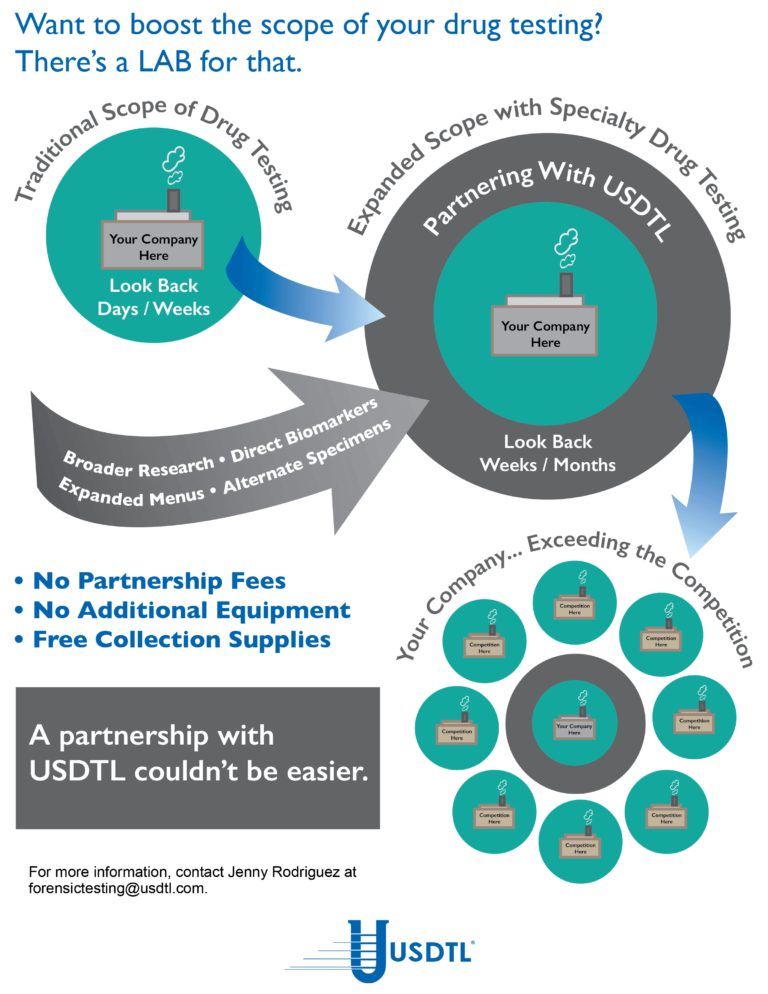Drug Exposure vs. Ingestion: What You Need to Know
Showing: Innovation

What You Need To Know: Testing for Drug Exposure vs. Ingestion
Testing for environmental exposure to illicit drugs is a powerful tool for protecting the welfare of children. Exposure testing is different from typical drug testing, and when properly done, has the potential to reduce the risk of harm to children.
No Metabolite Does NOT Mean No Exposure
Testing labs often apply government workplace testing guidelines to child exposure testing samples. Under workplace guidelines, negative results are reported when drug metabolites are absent in the testing sample, even if the native drug is present.
Child hair and nail samples for exposure testing often do not contain drug metabolites because the child has not ingested illicit substances. Adhering to workplace guidelines can result in false negative reporting for drug exposure, especially when children are involved.
Environmental Exposure
Environmental Exposure testing is most effective in alternative sample types, such as hair and fingernails. For example, hair testing is 3.5x more likely to detect methamphetamine exposure than urine testing. Typical drug testing samples are washed to remove drug biomarkers resulting from exposure. Environmental exposure testing eliminates this step.
– Click here to download the pdf.
Celebrating 10 Years of Forensic Toxicology Innovation Using LCMSMS Technology
By Joseph Jones, MS, NRCC-FTC
Ten years ago, USDTL, Inc. was a much different laboratory than it is today. Back then, we still had yet to develop fingernail, umbilical cord, or dried blood spot phosphatidylethanol (PEth) testing. We weren’t even testing ethyl glucuronide (EtG) in urine or hair, our most common form of alcohol testing today. But, as it turns out, ten years ago was right at the turning point for us, that moment of tremendous innovation and acceleration that has pushed us to the forefront of forensic toxicology we are at now. One of our biggest leaps forward at that time was adopting liquid chromatography (LC) technology into our methodology and moving from a solely gas chromatography (GC) focused laboratory to an integrated GC/LC facility. We’ve never looked back.
Our first LC instrument was generically dubbed machine Number 7, and it was a gamble for us. We had very little experience with LC methodologies, and we were not actively looking to adopt that technology at that time. In 2005 we were approached by the analytical technology company AB Sciex, who were looking to increase their competitive share of the forensic testing field, specifically with their liquid chromatography tandem mass spectrometry (LCMSMS) instruments. They made us an offer we couldn’t refuse – a new LCMSMS instrument in our lab, assistance in developing a new EtG/EtS urine assay, and six months to develop our market. After six months, they would let us decide whether or not we wanted to buy the instrument, or take a pass and send it back. What growing laboratory would ever say no to that?
As soon as assay development was complete, we starting receiving requests for urine EtG/EtS testing from all over the country. Major labs such as LabCorp and Witham labs relied on us to do all of their EtG/EtS testing. Six months came and went, and not only could we afford to keep Number 7, but we had built enough business to occupy two machines, and Number 9 was purchased as well. Number 9 passed on to new owners just a few years ago, but good ol’ Number 7 is still chugging away in our lab, having processed well over 100,000 samples in those 10 years. It’s a well-loved work horse to this day.
That offer from AB Sciex came out of the blue without warning, and for us, it was a major shake-up. We could have said “no thank you,” but we didn’t. Even with the generous offer made by AB Sciex, this course of action was a big risk for us. We took a chance on an opportunity to extend our innovation, as well as build a fantastic partnership that has endured these ten years. The net result was a powerful expansion of our instrumental capabilities that has allowed us to bring major innovations to the forensic testing world, such as umbilical cord testing, dramatically improved sensitivity in cannabinoid testing, PEth testing in dried blood spots, and more. Incorporating LCMSMS technology into our methodologies has allowed us to leverage our expertise to create what was previously not possible. It is a key factor in making USDTL first in newborn toxicology and without question the best hair and fingernail testing lab in the U.S.
Ten years on, we raise our glass to good ol’ Number 7, to the past 10 years of pushing the boundaries of forensic toxicology, and to another 10 years and beyond of making a difference in the world around us.
- Hair, Nail, and Umbilical Cord Testing for Phenibut, Medetomidine, and Tianeptine
- Umbilical Cord Tissue Testing for SSRIs
- A Comparison of Turnaround-Times for Two Popular Specimen Types Used for Newborn Toxicology: Meconium and Umbilical Cord Tissue
- Using Umbilical Cord Tissue to Identify Prenatal Ethanol Exposure and Co-exposure to Other Commonly Misused Substances
- Toxicology as a Diagnostic Tool to Identify the Misuse of Drugs in the Perinatal Period
- Specimen Delay
- Drug Classes and Neurotransmitters: Amphetamine, Cocaine, and Hallucinogens
- Environmental Exposure Testing for Delta-8 THC, Delta-9 THC, Delta-10 THC, and CBD
- February 2025 (1)
- October 2024 (5)
- March 2024 (1)
- February 2024 (1)
- January 2024 (3)
- December 2023 (1)



